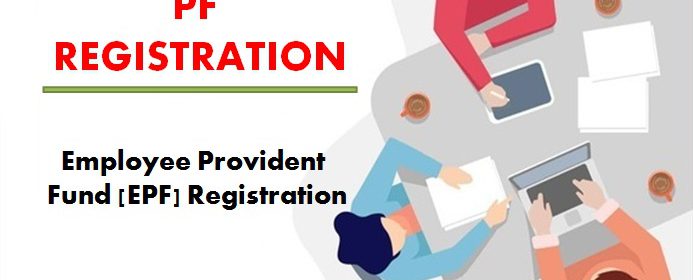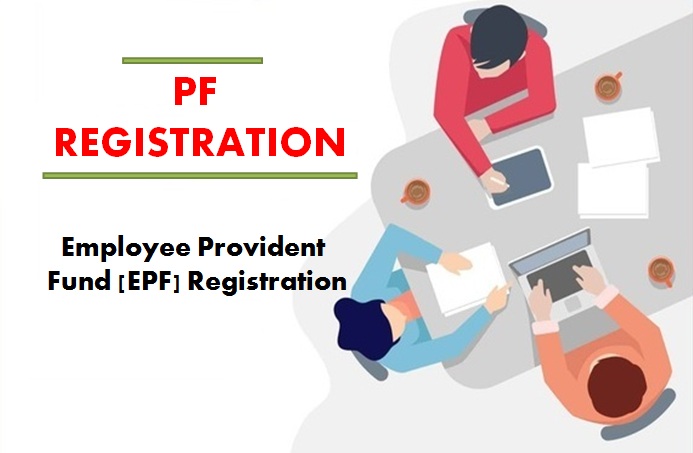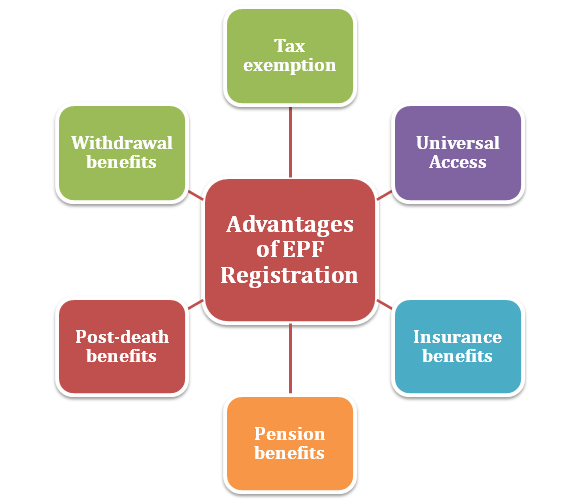Rules and regulations of PF Registration in India and its impact on employees and Organization

The Employees’ Provident Funds and Miscellaneous Provisions Act of 1952 governs the Employees’ Provident Fund Registration in India (EPF) scheme. It is governed by the Employees’ Provident Fund Organization (EPFO), which is one of the largest social security organizations worldwide in terms of clientele and financial transactions. In essence, EPF acts as an employee benefit during the organization’s retirement.In India PF Registration was strictly followed the rules and regulations .The EPFO Department effectively works in India.

Rules for PF registration in India:
All establishments must have PF registration in Coimbatore with the EPF:
- Which is a factory with 20 or more employees engaged in any industry.
- To any other establishment or group of establishments that employ 20 or more people that the Central Government may, by notification, specify in this regard.
Within one month of acquiring the strength, the employer must obtain the registration, failing which penalties will be imposed. Even if a registered establishment has fewer employees than the minimum required, the Act still applies for PF registration in Coimbatore.
After providing at least two months’ notice for compulsory registration of PF registration in Coimbatore, the Central Government may apply the provisions to any establishment with fewer than 20 employees.
Where the business and larger part of workers have concurred that the arrangements of this act ought to be made pertinent to the foundation, they may themselves apply to the Central Provident Fund (PF) Commissioner.
After publishing a notice in the Official Gazette from the date of the agreement or any subsequent date specified in the agreement, the Central PF Commissioner may apply the provisions of this Act to that establishment.
From the beginning of their employment, each employee will be eligible for a PF, and the employer will be responsible for deducting and paying the PF. Thus PF can be registered by PF Registration consultants in Coimbatore.
The employer and employee should split the 12% PF contribution equally. 12% of the base salary is contributed by the employer. The PF deduction rate will be 10% if the company has fewer than 20 employees. Such PF registration in Coimbatore can be done at affordable cost.

Form 5
EPF Form 5 is mentioned in Section 36(2) of the Employees’ Provident Fund Scheme of 1952. The EPFO and other organizations can use the form to keep track of the number of new participants in the program.
A Universal Account Number, which can be used to deposit both the employee’s and the employer’s contributions, will be given to an employee who successfully enrols. All businesses under the jurisdiction of the Employee Provident Fund Organization are required to participate in the EPF program. The EPF facility must be made available to all employees by the employer.
EPF Form 5 can be downloaded from the EPF India website or from your HR department. The employer must submit Form 5 for each new employee by the 15th of each month.
When the requirements are given to the PF Registration consultants in Coimbatore, they use above forms as per your requirements.
EPF tax rules
An EEE tax rule is EPF. As a result, it is not subject to tax on EPF withdrawals. In addition, contributions and interest received are tax-free. For PF registration in Coimbatore is, however, subject to taxation in some instances. They are:
- If an employer contributes more than 7.5 lakhs rupees to the Employees’ Provident Fund in a single fiscal year, the amount is taxable. A representative is at risk to pay charge on a sum that surpasses ₹7.5 lakhs.
- The interest earned on the employee’s excess contribution to the EPF account is taxable if it exceeds 2.5 lakhs in a single fiscal year.
- In the event that there is no business commitment to an EPF account, which is the situation for government representatives, then the premium will be charge excluded up to ₹5 lakhs in a monetary year.
- In the hands of employees, interest earned on EPF accounts that are not in use is taxed.
- Except for withdrawals that occur after less than five consecutive years of service, withdrawals from the Employee Provident Fund account are tax-free. Additionally, TDS will be charged at a rate of 10% on any withdrawals that are greater than 50,000 yen. However, an employee’s poor health, the closure of a business, or other circumstances beyond their control may exempt withdrawals.
Impact
The salaried class receives significant retirement benefits from the Provident Fund, including tax savings. Currently, an employee is required to contribute 12% of basic wages, which the employer matches. Employees’ take-home pay would have been reduced as a result of the recent circular’s requirement that they contribute more when receiving an allowance.
The majority of private businesses hire employees based on “cost to the company.” The take-home pay would be further reduced if the employer’s contribution were included in the total compensation.
Since the employer’s contribution is not taxable, the employees could save money on taxes. This would apply if the tax authorities decided to count the contribution to allowances as part of the contribution to basic wages alone, or if the tax laws changed in the right way.
Another advantage is the tax-free interest on the PF balance. However, if employees have EMI obligations for home or auto loans, the move could have a negative impact on their household budgets. Hence Pf can be registered by PF Registration consultants in Coimbatore.
In the current inflationary environment, the middle and lower income groups could bear the brunt of a decrease in take-home pay. Such PF can be registered by PF Registration consultants in Coimbatore.
The authorities have halted the circular, so we must wait to see what happens. Legal interpretations of the term “basic wage” have resulted in varying conclusions. In the most recent case involving Montage Enterprises, the Supreme Court’s final decision may resolve the matter and direct the PF authorities.
FAQ
When PF is tax free?
Accrual stage
When the accumulated balance receives interest
Maturity stage
When the amount is withdrawn from the fund and meets the exemption requirements, the Indian government has eliminated some of the aforementioned tax benefits to promote the National Pension Scheme and tax high-net-worth individuals.
What is PMRPY?
The government’s new Pradhan Mantri Rojgar Protsahan Yojna pays the entire employer’s contribution to EPF and EPS in order to encourage and motivate employers. This is done to encourage employers to create additional jobs. The PF can be registered by PF Registration consultants in Coimbatore.
